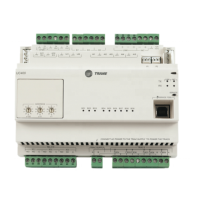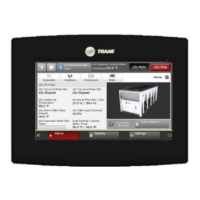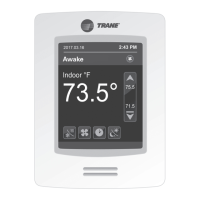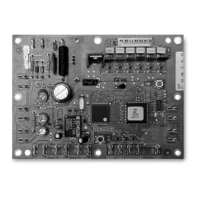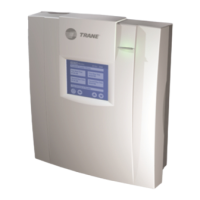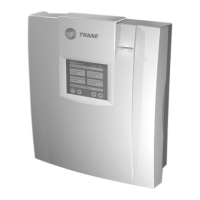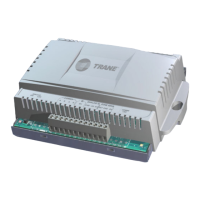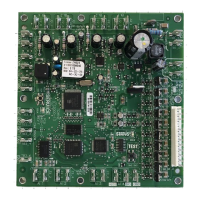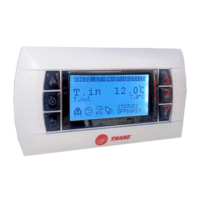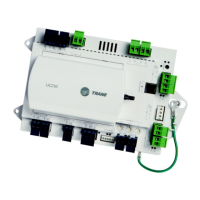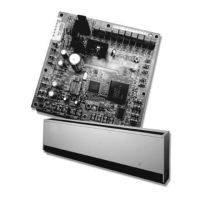34 CNT-SVX17G-EN
Sequence of Operations
Occupancy
This section provides information that relates to the operation of the Tracer
®
VV550/551
controller and includes the topics of:
• Occupancy modes;
• Space setpoint operation;
• Occupancy mode sources;
• Determining the occupancy mode;
• Overriding occupancy;
• Occupancy arbitration.
Occupancy Modes
Tracer VV550/551 controllers have four valid occupancy modes.
Occupied Mode
Occupied mode is the normal (default) operating mode for occupied spaces or daytime
operation. When the controller is in the occupied mode, it uses occupied setpoints and
runs in:
• Occupied temperature control;
• Ventilation flow control or space temperature control;
• Flow tracking control.
Unoccupied Mode
Unoccupied mode (also known as night setback) is the normal operating mode for
unoccupied spaces or nighttime operation. Unoccupied setpoints enable or disable
occupied space temperature control.
When the controller is in the unoccupied mode and configured for space temperature
contr
ol, the controller attempts to keep the space temperature between the active
unoccupied heating setpoint and the active unoccupied cooling setpoint.
When the controller is in the unoccupied mode
and configured for ventilation flow
control, it will not run in unoccupied mode, the air valve is closed, and local heat is
disabled. A flow tracking controller runs the same as when it is occupied.
When the controller is in the unoccupied mode a
nd configured for flow tracking control,
it runs the same as it does in occupied mode.
Occupied Standby Mode
Occupied standby mode is used to reduce the heating and cooling demands during the
occupied hours when the space is unoccupied. It can be activated for a classroom
currently not in use.
The controller can be placed in the occupied standby mode when a communicated
occu
pancy mode request (from a communicated occupancy override, occupancy
schedule, or occupancy sensor) is combined with an occupancy request from the local
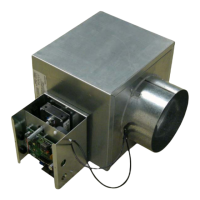
